 Image search results - "Po" Image search results - "Po" |

PR poster for the Kamogawa Odori geisha dance held during May 1-24 in Pontocho.
|
|

Monorail to Chiba Koen Station 千葉公園駅
|
|

Women at the starting line for triathlon
|
|

Pontocho Kaburenjo theater, venue for Kamogawa Odori.
|
|

View of Chiba Park from monorail. 綿打池
|
|
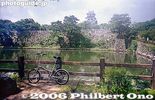
My bicycle
|
|

Pontocho is a narrow alley and known as a geisha district.
|
|

Carrying back a single sculling boat
|
|

Chiba Park approach
|
|
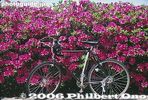
My bicycle somewhere in Gamagori.
|
|

Dance program for 2005.
|
|
|
|
|
|

Barrels of sake next to the theater.
|
|

White weeping cherry blossoms
|
|
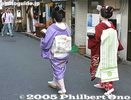
A geisha/geiko and maiko head to the theater to see the Kamogawa Odori. Notice the different obi sash on the back.A maiko is an apprentice geisha. Her obi sah on the back is long, as well as her sleeves.
|
|

White weeping cherry blossoms
|
|

Pontocho Kaburenjo theater
|
|

Pink weeping cherry blossoms
|
|

Geiko and maiko in front of Pontocho Kaburenjo theater
|
|
|

Entrance to Pontocho Kaburenjo theater. You can buy tickets for the day's performance.
|
|

Chiba Station and monorail
|
|
|
|

Boat for Taketomi at Ishigaki Port.
|
|

Inside monorail
|
|

Inside the theater, waiting for the start of the 168th Kamogawa Odori (in 2005) to start.
|
|

Weeping cherry and Senzoku-Ike Pond. Near Senzoku-Ike Station on the Tokyu Ikegami Line from Gotanda.
|
|

June 9, 2007. Hula dancers rush to Pukari Sanbashi Pier where the Hokule'a canoe is to dock. ぷかりさん橋
|
|
|

Kyu-Shiba-rikyu was first built in the 17th century and used as the residence of a number of nobles. Purchased from the Arisugawa family in 1875 by the Imperial Household Agency which made it the Shiba Detached Palace.
|
|

Part 1 Monogusa Soshi: Taro's Shack. Lazy Taro does nothing but compose poems all day in his shack. 物ぐさ草紙 太郎の小屋The first half is a musical play with a storyline.
|
|

Senzoku-Ike Pond has a walking path which goes almost completely around. Only 1.2 km.
|
|

A crowd of a few hundred on hand to greet Hokule'a's arrival.
|
|
|

JR Chiba Station
|
|

Bird's eye view of Kyu-Shiba Rikyu Gardens as seen from Hamamatsu World Trade Center
|
|

Taro's Shack
|
|

Senzoku-Ike Pond and cherry blossoms.
|
|

People crowd the waterfront near Pukari Sanbashi Pier.
|
|
|

Museum's observation deck.
|
|

The buildings were destroyed in the Kanto Earthquake in 1923 and the property was donated to Tokyo in 1924 to commemorate the start of Emperor Showa's reign.
|
|
|
|

Map of pond
|
|

People crowd the waterfront near Pukari Sanbashi Pier.
|
|
|
|
|

Magistrate's House
|
|
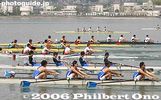
Close-up of rowers at Asahi Regatta
|
|

Bridge
|
|

Hokule'a already in sight well before 11 am when it was scheduled to dock.
|
|

White and pink weeping cherry blossoms
|
|

Pine trees and pond
|
|
|
|
|

Hokule'a and escort ship Kama Hele. What makes this canoe so special and famous is that it was used to sail from Hawaii to Tahiti (and many other places) without any modern navigational instruments.
|
|

About 30 weeping cherry trees ring the pond's perimeter.
|
|
|
|
|
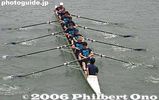
Kyoto Univ. alumni
|
|

They only referred to the sun, moon, the stars, and ocean waves to navigate through the vast Pacific Ocean or Polynesia. This is called celestial navigation. Extremely few people can do this, and the Hawaiians are learning this skill of long-ago.
|
|

Chiba Park
|
|

Heavyweight judo Olympic gold medalist Satoshi Ishii (石井 慧) was also at Yasukuni Shrine on Aug. 15, 2009. He was very kind and signed autographs, shook hands, and took photos with a lot of people.
|
|
|
|

They wanted to prove that the original native Hawaiians were able to sail between Tahiti to Hawaii on purpose, and that they did not land on Hawaii by accident.
|
|
|
|
|

Taro overhears the Lord's daughter trying to compose a poem.
|
|

Hokule'a and Yokohama Bay Bridge in the background.
|
|
|
|
|
|

One sail unraveled.
|
|
|
|
|
|

Taro helps her compose her poem.
|
|

"Senzoku" means "wash feet." One legend says that Nichiren washed his feet in the pond.
|
|

Nearing Pukari Sanbashi Pier. The question was, which side of the pier would it dock? (Was going the other side so I rushed over to the other side.)
|
|

This is early in the morning when the 54 portable shrines who had gathered in front of the shrine depart for the procession one after another.
|
|

Trout fishing ponds for customers in warmer months.
|
|
|
|

Hypocenter of atomic bomb, adjacent to Peace parkAlmost right next to the Peace park is the hypocenter marker above which the bomb exploded. Often hoards of students on class trips can be see squatting here listening to a talk about this place.
|
|

Cycling for triathlon
|
|

Koi carp fish
|
|

Taro has a scuffle with the daughter and breaks her koto instrument.
|
|

This garden is very green. Even the pond is deep green. Kiyosumi Garden is classified as a "kaiyu-shiki teien" (回遊式庭園) or "circular-strolling Japanese garden." It's a common and classic Japanese garden design where you simply walk around the garden, usually around a central pond.
|
|

The area with the cherry trees is called Sakurayama.
|
|

Hokule'a nears the dock.
|
|

Riverside fishing ponds
|
|

In front of Tomioka Hachimangu Shrine on Eitai-dori road.
|
|

Most of the weeping cherries are planted along the pond's edge.
|
|
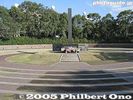
Hypocenter of atomic bombA series of concentric circles emanate from the marker.
|
|

Bracing a pine tree for winter snow.
|
|

Mother scolds the daughter for the scuffle with Taro.
|
|

One end of Shakujii Park.
|
|

Iwasaki Yataro, the founder of the Mitsubishi Zaibatsu, acquired the estate in 1878 and developed the garden with a pond and famous stones brought from all over Japan.
|
|
|
|

A rope is thrown to the dock from Hokule'a.
|
|
|

Niiya Hitomi, the first woman runner I saw went on to win the women's division. I wondered where the women runners were. They were more than 20 min. behind the men to finish. 新谷仁美 東京マラソン
|
|
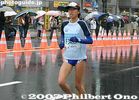
Niiya Hitomi, leading woman runner and later fastest woman to finish with a time of 2 hr. 31 min. 1 sec. Age 18. 新谷仁美 東京マラソン
|
|

Chiba Park weeping cherries
|
|

Hypocenter markerOn August 9, 1945 an atomic bomb exploded in the sky about 500 meters above the point where this monument now stands. The area within a 2.5 kilometer radius of the hypocenter was completely devastated.
|
|
|
|
|

Shakujii Pond 石神井池
|
|

Many matsu pine trees and many stones.
|
|

Bentenjima, a small peninsula connected by a bridge.
|
|

Hokule'a arrives right on schedule at 11 am on June 9, 2007. Yokohama is its last stop.
|
|
|

Boats for rent
|
|

Hypocenter description
|
|
|
|
|

Swan boats on Shakujii Pond. 石神井公園
|
|

Stepping stones, called Isowatari, are another major feature of the garden.
|
|

The pond is also depicted in woodblock prints such as by Hiroshige.
|
|

Hula dancers
|
|

As the mikoshi depart, there is some entertainment at the Tomioka Hachimangu Shrine.
|
|
|

Remains of Urakami Cathedral wallNext to the hypocenter is this partial cathedral wall.
|
|

Yukimi Stone Lantern
|
|
|
|

Stepping stones, called Isowatari. 磯渡り
|
|

Duck pond
|
|

Conch shell blowers signal the canoe's arrival.
|
|

Taiko drummers at Tomioka Hachimangu Shrine.
|
|
|
|
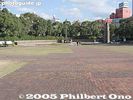
Hypocenter
|
|

Isowatari. 磯渡り
|
|
|
|
|

It turns out that Taro was a grandson of the Emperor.
|
|
|
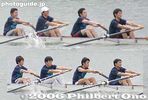
Kyodai alumni in their 20s and 30s
|
|

Pulling Hawaii's most famous canoe to dock.
|
|

In front of the shrine, a shrine priest blesses each portable shrine as it departs to join the procession.
|
|

Shiga University women rowers
|
|
|

Memorial at hypocenterErected in July 1995 for the 50th anniversary.
|
|
|
|

Shakujii Pond 石神井池
|
|

Isowatari. 磯渡り
|
|

Under overcast skies, Hokule'a docks.
|
|

The portable shrines are paraded through a route which will take them almost all day to complete, from 7:30 am to 3 pm.
|
|
|
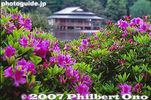
Azalea bushes and Ryotei teahouse
|
|

Taro gets to marry the lord's daughter.
|
|
|

Bridge to Bentenjima.
|
|
|
|

The mikoshi are splashed with water in whichever way possible. This is in the middle of summer, so it's a good way to cool off.
|
|
|
|

Stone monuments
|
|
|
|

Escort ship (powered by a Yanmar engine) Kama Hele also docks soon afterward.
|
|

Each mikoshi is preceded by a row of women carrying lanterns and wands. Also see the video at YouTube
|
|
|
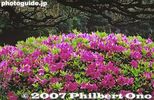
Pine branches and azaleas
|
|
|
|
|

Sakurayama with hanami pinickers.
|
|

Koinobori carp streamers adorn Hokule'a. A great Japanese touch.
|
|

People in happi coats carry the mikoshi while shouting "Wasshoi, wasshoi!"
|
|
|
|
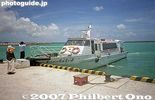
Taketomi Port boat for Ishigaki
|
|

Red and white azaleas
|
|

Bridge to Nakashima island
|
|

End of Part 1 with a happy ending.
|
|

What is this?
|
|
|
|
|
|
|

Standard uniform of portable shrine bearers (for both men and women).The headband may be tied at the front or back of the head. It may also be tied on the head like a bonnet. There is a variety of ways of tying the headband.
The happi coat bears the name of the parish or district the person belongs to. The same name is displayed on the respective portable shrine. The shorts are white and skintight. Worn by both men and women. Also called Han-momo or Han-momohiki. The white tabi (sock-like shoe) has a rubber sole.
|
|

Nakashima island
|
|

Part 2: Passing of Spring in Kyoto, "Nanohanaya" (Rape blossoms) 菜の花やPart 2 of the program consists of dance numbers.
|
|

An egret stalking insects. It did not mind us photographers only meters away.
|
|

Ryotei teahouse 涼亭
|
|

Hanami at Senzoku-Ike
|
|

Escort ship Kama Hele flying the Japanese, Hawaiian, and Yanmar flags at Yokohama.
|
|

Chiba Park
|
|
|

"Nanohanaya" (Rape blossoms) 菜の花や
|
|

The only egret which never flew away when I approached.
|
|

Huge and hungry carp
|
|

This is where the path around the lake ends.
|
|

Welcome banner from Yanmar
|
|
|
|
|
|

"Nanohanaya"
|
|

Notice the black legs and yellow feet.
|
|

In case you fall into the pond...
|
|

Portable shrines
|
|

Crowd on the waterfront near the pier.
|
|
|
|

Monorail track
|
|
|

"Nanohanaya"
|
|

Hokule'a crew members
|
|

"Hey Ho, Let's Go!"
|
|
|
|

"Nanohanaya" (Rape blossoms) 菜の花や
|
|

The Royal Order of Kamehameha I take part in arrival ceremonies. 入港式
|
|
|
|

Running in triathlon
|
|

World Trade Center in Hamamatsucho overlooked the garden. World Trade Center Building (世界貿易センタービル) in Hamamatsuchō was a 40-story commercial skyscraper. It was once Japan's tallest building in 1970.The building closed for good on June 30, 2021 and was torn down during Aug. 2021 to March 2023. The building will be replaced with a new World Trade Center building to be completed in March 2027.
|
|

"Nanohanaya" (Rape blossoms). They dance like they were melting into the sea of flowers. 菜の花や
|
|
|

Hokule'a arrival ceremonies
|
|
|
|

This mikoshi is being carried by all women, already soaked to the bone. They carry the mikoshi flat on their shoulders. This is called "Hira katsugi," literally "flat carrying."There are four basic methods of carrying a portable shrine. This is the most basic method where they carry it flat on their shoulders. This is called "Hira katsugi," literally "flat carrying."
|
|
|
|

"Nanohanaya" (Rape blossoms) 菜の花や
|
|

Bridge to a small island and gazebo
|
|

Captain Bruce Blankenfeld places a lei on the bow.
|
|
|
|
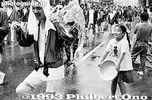
Splash you. This is a day when kids can be mean to grown-ups. This little girl kept filling up her bowl and ran around splashing some unlucky person.I hope that's her school teacher.
|
|

Akiko Sekine who later won the women's triathlon.After cycling, they ran for 10 km. About 30 min. later, this woman, Akiko Sekine won the triathlon. She was one of athletes who went to the Athens Olympics (placing 12th).
|
|

"Irises" are in full bloom. 菖蒲
|
|

Gazebo on one of the three islands in the pond. あずまや
|
|

Hula dancers
|
|
|

"Irises" 菖蒲
|
|
|
|

Kyoto University's winning rowing crew
|
|

Hula dancers take part in arrival ceremonies.
|
|

Water splashing truck near Kiyosu-bashi Bridge
|
|
|
|

次郎弁天の池
|
|

"Irises" 菖蒲 She rises from beneath the stage.
|
|
|
|
|

Water hose at Kiyosu-bashi Bridge
|
|

Arakiyama hill 荒木山A low hill is next to the pond. Some cherry trees are also on this hill.
|
|

Benten Pond
|
|
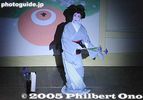
"Irises" She holds an iris flower. She just took a bath with iris leaves. 菖蒲
|
|

"Mt. Fuji" with azalea bushes blooming in early May.
|
|

Hokule'a crew dance on the canoe.
|
|

Fishing ponds
|
|
| 5250 files on 21 page(s) |
1 |
 |
 |
 |
 |
|